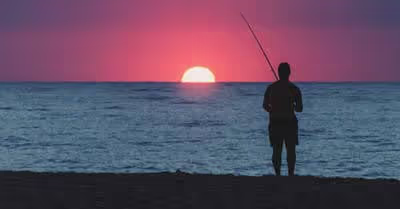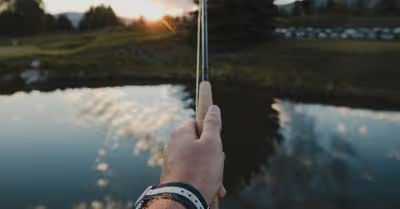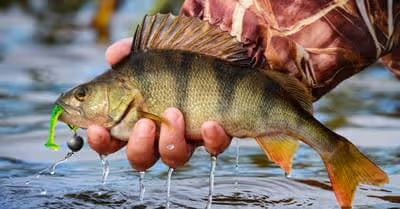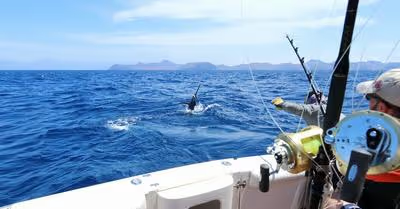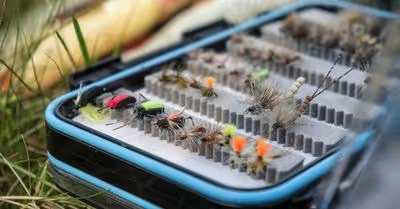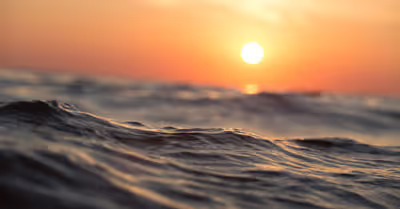Table of Contents
Shelf Life Of Monofilament Line
Monofilament is the most popular fishing line among novices and weekend warriors because it is cheap and available everywhere.
Mono is a single strand of plastic that will wear out over time. If you are doing light recreational fishing, you could get three years out of your line.
However, if you are doing hard fishing and are out there weekly in rough waters and conditions, then consider changing your line at the end of every season.
Care of Monofilament Line
Overtime your monofilament line will wear out due to sunlight, moisture, swings in the weather and temperature can all break down the line.
However, with proper care and maintenance you can prolong the shelf-life of your monofilament line.
Most anglers keep a majority of their gear in the same spot for the entire year, whether that be a shed, basement, or garage. These areas have dramatic swings in moisture and temperature.
When you buy a large spool of line, place it in a freezer. The freezer will stop the line from breaking down and help you stretch your dollar.
When To Change Monofilament Line
Monofilament is fairly cheap. I recommend buying a large spool and changing out the line at the end of every season.
If you go away on a fishing trip and you end up getting stuck in bad weather, or the temperature fluctuated, then change the line on your reel when you get home.
Ruining a fishing trip over a weak mono line is not worth the headache.
Shelf Life Of Fluorocarbon Fishing Line
A fluorocarbon line is a single strand of fiber, but it is made with denser material. It lacks the stretch of monofilament line but handles abrasions well.
Monoline is buoyant and popular among the trolling and topwater crowd. While fluoro is more popular with fishers who want to sink their line.
The fact that fluoro stands up to abrasions, makes it last longer than mono. Think of all the times you lost a lure because you got hung up on rocks or structures.
Fluoro fishing line will last longer than mono, usually two to three times longer. Giving you a potential shelf life of eight years.
Care Of Fluorocarbon Fishing Line
Fluorocarbon is more temperamental than the monofilament line. Meaning, if you leave it out in the sun or expose it to weather/temperature swings then it will become brittle faster than mono.
Because of this storage is going to be extremely important. Fluorocarbon does best in a cool spot, where sunlight cannot harm the line. Many serious anglers will buy special tackle boxes, which prohibit light from damaging the line. Store that tackle box in a cool dark spot and the line will last a while.
Fluorocarbon Line Conditioner
You do not hear many anglers talk about conditioning their lines. But, it will help prolong the shelf-life of your line, especially when using fluorocarbon.
I will soak a cloth in a line conditioner. Then cast out. As I am reeling in I will ride the cloth on the line, making sure the entire line gets coated.
I typically do this first thing in the morning, but if the weather changes I may reapply in the afternoon and at night.
Popular line conditioners are
- Reelsnot
- Kevin Van Dams
- Brass Pro Shop’s Brand (this is what I use)
When To Change Fluorocarbon Fishing Line
Even though fluorocarbon, in theory, has a longer shelf-life than mono, I still recommend following the same guidelines.
The fact that is it so temperamental to the weather often worries me. However, I fish in New England. I can wake up in July and it will be 50 degrees but by noon it’s 90 degrees. So, I am constantly fishing dramatic swings in temperature.
Because of this, I swap out my fluorocarbon line at the end of the season. However, I am less likely to swap out during the season, because I keep my line conditioned.
Shelf Life Of Braided Line
The braided fishing line will last the longest, which it should seeing how you need to take out a second mortgage to buy it…
The braided fishing line is several strands of line braided together. It is the strongest line and becoming more and more popular.
A braided line should last you a few seasons, as long as you are careful with the line.
Care Of Braided Fishing Line
Braided line is fairly resilient, meaning you don’t need to put a whole bunch of care and effort into maintaining the line.
One way you can prolong the shelf life of the braided line is by swapping it over to a reel.
For example, if you notice that your line appears frayed and worn out. You can attach the top end of your line to a new reel. Then reel in the line. So, now the line that was on the bottom of the spool will be on the top.
This is one way to prolong the life span of your reel.
Braided Line Lubricant
Like fluoro line there are lubricants and conditioners you can use on braided. The three conditioners I mentioned above are good for a braided line as well.
There are also DIY versions, which people make their own using common household items. I don’t usually recommend DIY versions, but it is certainly something you can look into. I know people who use baby oil, I never tried this though.
Inspecting Fishing Line
Like I mentioned, all fishing lines will eventually go bad. Weather, UV, water, the content of minerals in the water, temperatures, storage, and so forth will all wear out your line.
But, catching fish will also wear out your line. If you keep catching 2-5lb lunkers on your line, it will add stress to the line.
Look and feel your line. If it feels brittle, stiff, and old, then it probably is. If you can see fraying or weak points, then it is probably getting old and you should dispose of it.
Testing Fishing Line
You can perform a quick test on your fishing, by attaching weights to the line. For example, if you have 20lb test then, in theory, you should be able to suspend 20 plus pounds from the line, without snaps.
It isn’t an exact science but seems to make sense.
Disposing Of Old Line
One of the most frustrating things I see as a fisher is old line on the shore, in the water, or anywhere it is not supposed to be.
Fishing line can harm animals, birds, and fish and can cause anglers to lose rights to fishing grounds and watering holes.
You should take the line home and disposed of it in your trash. I generally put it in an old container and toss it into recycling.
Many public lakes will have containers that are specifically designed for anglers to recycle their line. Usually, some PVC tubbing near the public boat ramp.
Wrap Up
Fishing gear is an expensive investment. But, with proper care and due diligence, your line can last an entire season. If you buy quality and take care of your gear, it will take care of you.
Recent Articles



